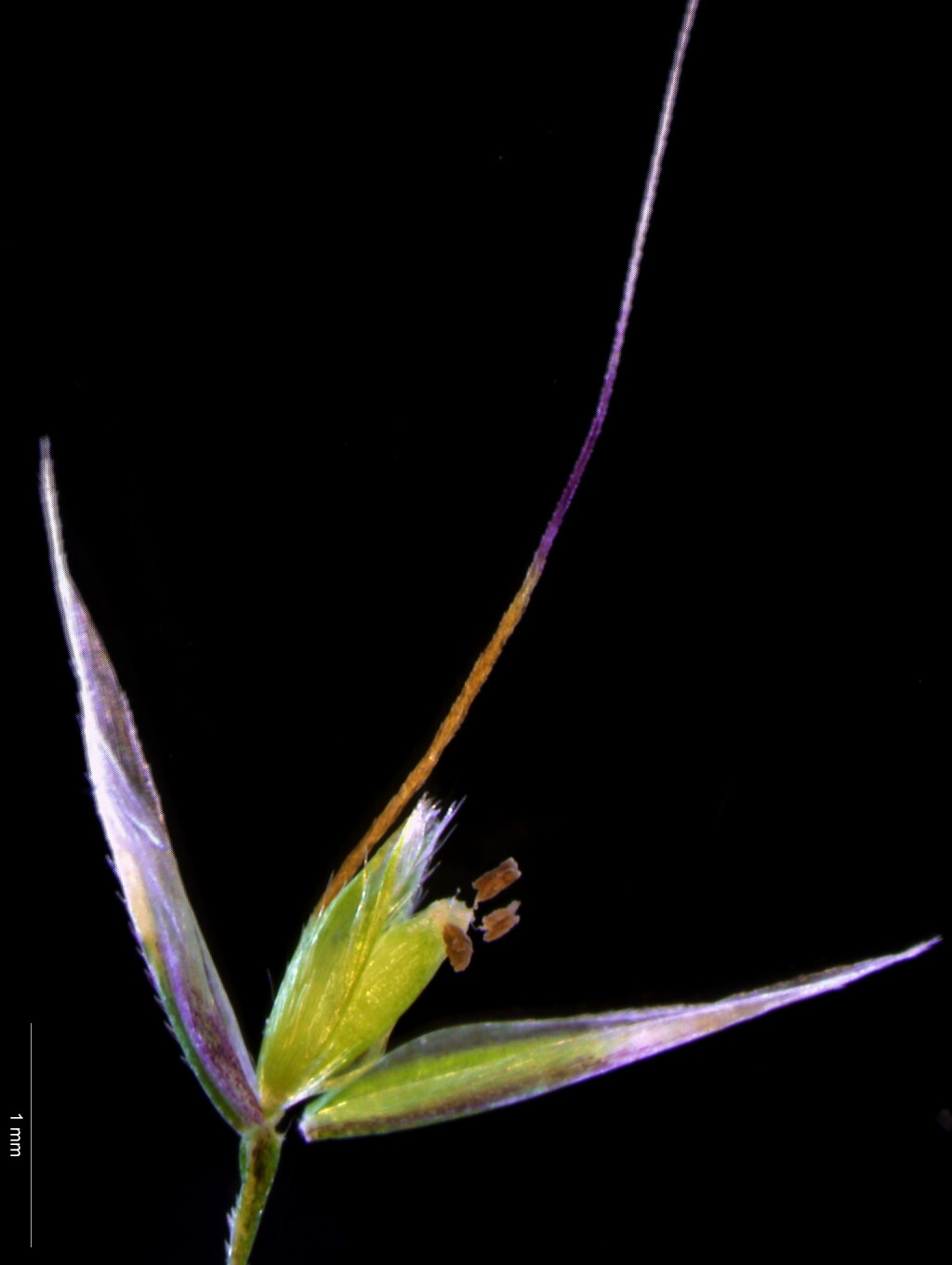Lachnagrostis filiformis
(G.Forst.) Trin.Tufted or shortly rhizomatous glabrous annual or perennial, culms erect, often geniculate at base, to 80 (–120) cm high. Leaf-blades flat or folded, to 30 cm long and 1–3.5(–7.3) mm wide; ligules obtuse, soon becoming shredded, 2–8 mm long. Inflorescence a loose panicle, to 30 cm long, its base often enclosed by the upper leaf-sheath until maturity, branches often drooping, the culm typically breaking below the panicle at late maturity. Spikelets 2–5.5 mm long (excluding awn), usually pale green, but sometimes tinged purplish; glumes acute or acuminate, subequal or the lower slightly longer, keeled, scabrous along the keel; lemma 1.3–3.5 mm long, minutely 4-toothed at apex, variably covered with hairs, rarely almost glabrous, awned from near the middle; awn bent, exceeding spikelet by up to 4 mm; palea subequal to lemma; rachilla bristle plumose; anthers mostly 0.1–0.5 mm long. Flowers mainly Sep.–Jan.
LoM, MuM, Wim, GleP, Brid, VVP, VRiv, MSB, RobP, MuF, GipP, OtP, WaP, Gold, CVU, GGr, DunT, NIS, EGL, EGU, WPro, HSF, HNF, OtR, Strz, MonT, HFE, VAlp. Occurs across a wide variety of habitats but usually on poorly drained or seasonally wet sites; uncommon to rare at higher altitudes and very rarely recorded in the alps above the treeline.
The features used to distinguish Lachnagrostis aemula from L. filiformis show no sharp discontinuity, but when used collectively, they usually allow placement into one or other of the species. Occasional specimens appear to defy confident placement into either species; this suggests that a critical appraisal of these and other closely related taxa is required.
Lachnagrostis ×ripulae is a presumed hybrid between L. filiformis and L. rudis subsp. rudis.
 Spinning
Spinning




